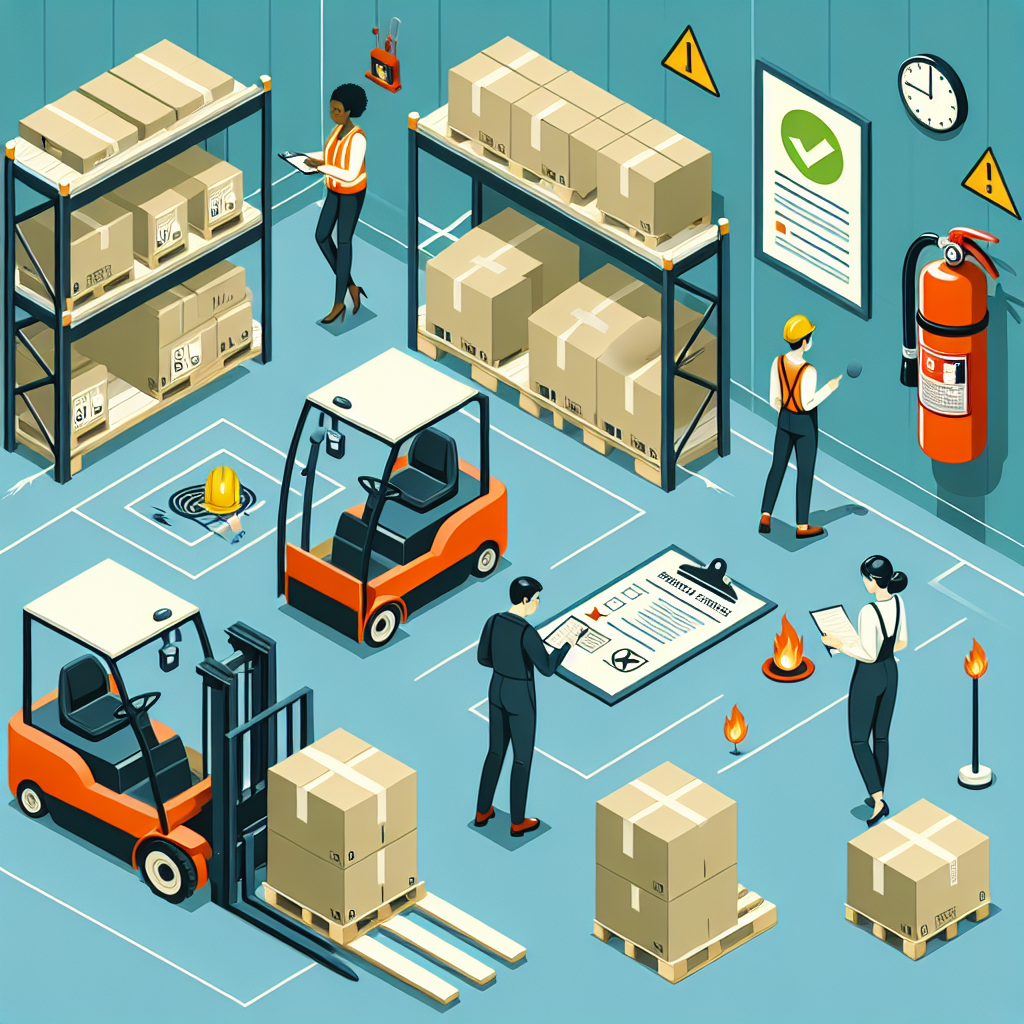In the fast-paced world of logistics and distribution, warehouses serve as the backbone of supply chain operations. However, managing a warehouse is not just about keeping products organized; it is also about ensuring a safe and efficient working environment for all employees. In this article, we’ll dive into the essential guidelines that govern warehouse operations, covering everything from forklift safety to fire prevention strategies.
Understanding the Importance of Warehouse Safety
Warehouse safety should be a top priority for both employers and employees. According to the Occupational Safety and Health Administration (OSHA), warehouses are prone to various hazards that can lead to serious injuries. Implementing safety protocols not only protects your workforce but also enhances productivity and reduces downtime from accidents.
Forklift Safety: The Backbone of Warehouse Operations
Training and Certification
Forklifts are among the most critical tools in a warehouse, but they also come with significant risks. Ensuring that all forklift operators are well-trained and certified is vital. Training should cover:
- Safe operating procedures
- Understanding load capacities
- Emergency protocols
Daily Inspections
Routine checks before operating a forklift can prevent accidents. Operators should inspect:
- Brakes and steering
- Forks and chains
- Lights and alarms
Best Practices While Operating Forklifts
To create a safe environment, operators should adhere to best practices such as:
- Maintaining a clear line of sight
- Using horns at intersections
- Never exceeding the load capacity
Inventory Management: Keeping It Ordered and Safe
Inventory management is not merely an organizational task; it plays a crucial role in maintaining safety. Keeping products organized can prevent accidents caused by falling items or misplaced goods.
FIFO (First In, First Out)
Implementing the FIFO method ensures that older stock is used before newer items, reducing the risk of deteriorating products and falling hazards.
Proper Stacking Techniques
Ensure that items are stacked correctly to minimize the risk of collapse. Always stack heavier items at the bottom and lighter items on top.
Fire Safety: A Critical Component of Warehouse Safety
Conduct Regular Fire Drills
Educating employees about fire safety protocols is critical. Regular fire drills help familiarize staff with evacuation routes and emergency procedures, ensuring everyone’s safety in case of a fire.
Install Fire Suppression Systems
Make sure your warehouse is equipped with fire suppression systems (sprinklers, alarms, etc.). Regular maintenance and testing of these systems can save lives.
Proper Storage of Flammable Materials
If your warehouse stores flammable materials, ensure they are kept in designated areas with proper signage. Use secure, ventilated containers and ensure employees are trained on handling these materials safely.
Ergonomics: Health and Safety Go Hand in Hand
Assessing Workstations
Even simple tasks can lead to injury over time. Assess workstations and ensure that they are ergonomic to reduce strain and improve employee comfort.
Encourage Breaks
Discourage long periods of repetitive tasks. Encourage employees to take breaks to stretch and reposition themselves. This not only promotes physical well-being but also enhances productivity.
Conclusion: Prioritizing Safety for Efficiency
Navigating warehouse guidelines is essential for creating a safe and productive environment. By adhering to forklift safety protocols, proper inventory management, and fire prevention strategies, you can significantly reduce risks and ensure that your warehouse operates smoothly.
Incorporating these essential guidelines fosters a culture of safety that benefits everyone involved—employees feel valued, and companies experience increased efficiency and reduced liability.
Remember, safety in a warehouse is not just a checklist—it’s a way of life that can lead to a thriving operation. By humanizing safety protocols and making them accessible, employees become more inclined to adhere to them. Create an environment where safety is everyone’s responsibility, and you’ll pave the way for success.


